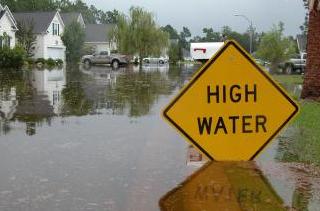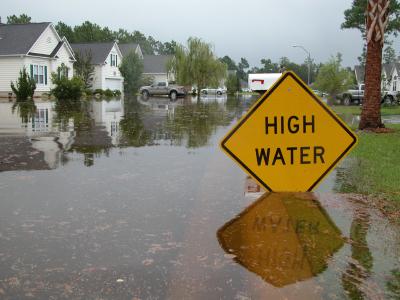 The cost of flooding has doubled within the past 10 years and now rivals losses caused by earthquakes, according to a new report.
The cost of flooding has doubled within the past 10 years and now rivals losses caused by earthquakes, according to a new report.
The combination of these losses and the insurability of floods provides unique challenges for the insurance industry, according to global reinsurer Swiss Re.
The report, “Flood – an underestimated risk: Inspect, inform, insure” indicates that no other natural catastrophe impacts as many people as flooding with an estimated 500 million people affected every year.
Insured flood losses are also increasing significantly; 1970’s annual claims were from $1 to $2 billion, whereas insured flood losses amounted to $15 billion in 2011. Recent flood events in Thailand, Australia and the Philippines have shown that floods are now rivaling earthquakes and hurricanes in terms of economic losses.
However, awareness of flood risks and their impact is still relatively low. Swiss Re’s publication “Flood – an underestimated risk” aims to close this knowledge gap.
“With this publication we want to raise greater awareness of floods, their risks and the role of insurance in addressing them. We show what it takes to tackle the challenges in flood insurance and what successful solutions might look like for homeowners and companies,” Matthias Weber, Swiss Re group chief underwriting officer, said in a statement.”
The report indicates that population growth, demographic change, a higher concentration of assets in exposed areas, greater vulnerability of insured objects and climate change are all contributing to the increasing costs of flood damage. The rising costs of floods are creating challenges for the insurance industry and the economic viability of flood insurance is currently an issue under scrutiny.
“2011’s $12 billion insured losses in Thailand really highlighted the potential for flood to cause extreme losses. The insured losses corresponded to 1,800 percent of the country’s total annual property premium – and this emphasizes the difficulties the industry faces in creating an economically viable approach to flood insurance,” Jens Mehlhorn, head of flood at Swiss Re and the report’s key author, said in a statement.
At the center of the flood report is an investigation into ways of building adequate insurance populations to share the risk of flooding and how insurers can play a role in advising on risk-minimization strategies such as flood-walls and urban planning. The report also investigates national programs that are currently meeting the challenge of providing flood coverage.
One of the most important lessons learnt from Thailand’s flooding was the identification of ‘hot spots’ – or clusters of globally relevant industries in flood prone regions. These areas can cause extreme losses because claims are not only incurred locally, but through interruptions to supply-chains and decreased manufacturing productivity internationally.
The identification of these hot spots was enabled by Swiss Re’s Global Flood Zones model, which provides very high resolution flood maps for the entire globe.
“The existence of such hot spots has increased the emphasis on risk modeling and underwriting tools. It is crucial to get the information necessary to know where risk clusters have developed and how significant a flood event would be in those areas. The Global Flood Zones® tool is a very significant step forward for the industry, ” Mehlhorn said.
Swiss Re is also launching a flood app for iPads, which is available in the App Store. The app provides an interactive approach to presenting Swiss Re’s expertise to a broader audience. It provides rich interactive content around the issue of flood risks and flood insurability. It also offers an interactive tool to examine the hot spot risk of 50 major metropolitan areas around the globe.
“Knowledge-driven companies like Swiss Re need to embrace new channels for communicating their expertise. The flood app allows us to reach out to a broad audience in an entertaining and interactive way,” Weber said.












